This is the 25th set from a collection of about 350 postcards of the Kaiserliche Marine, or the German Imperial Navy. For the main catalog page of this archive, visit WWI German Navy Postcard Collection.
This set includes:
- S.M.S. Westfalen
- S.M.S. Mecklenburg
- S.M.S. Posen
- S.M.S. Stuttgart
- S.M.S. Stettin
- S.M.S. Königsberg
- S.M.S. Hamburg
- S.M.S. Hannover
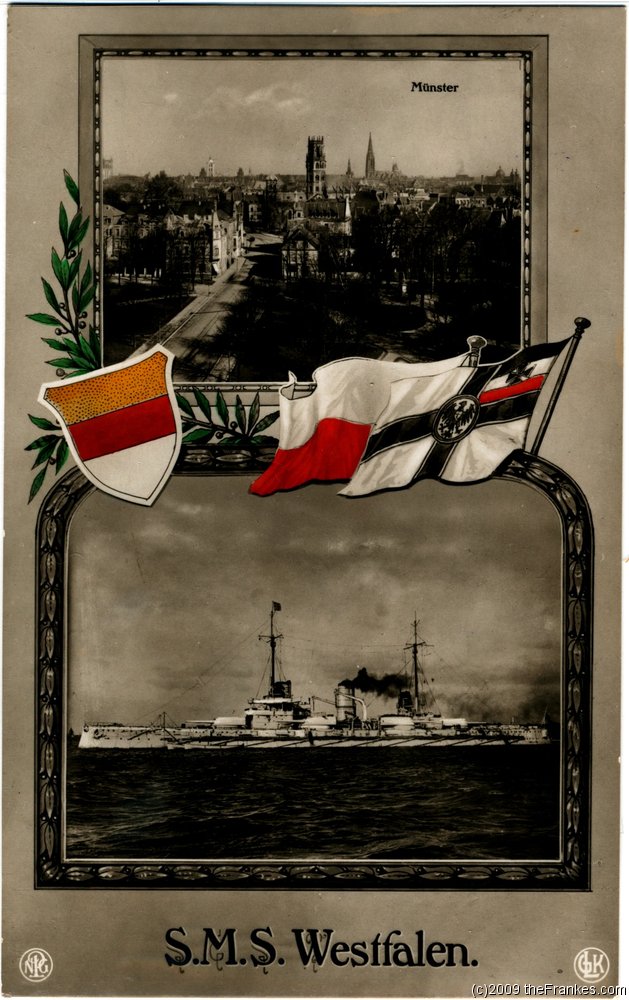
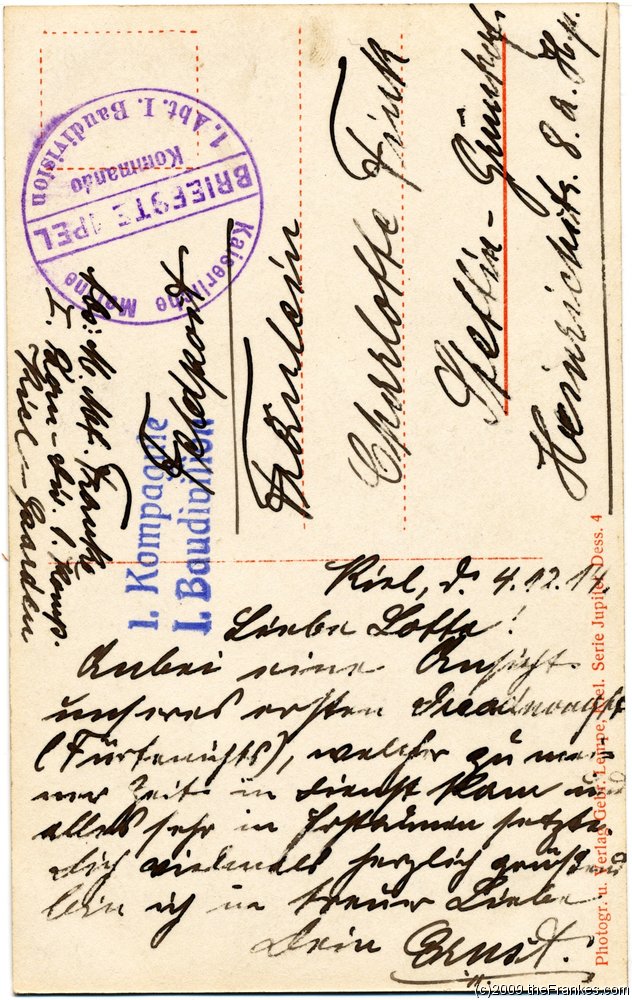
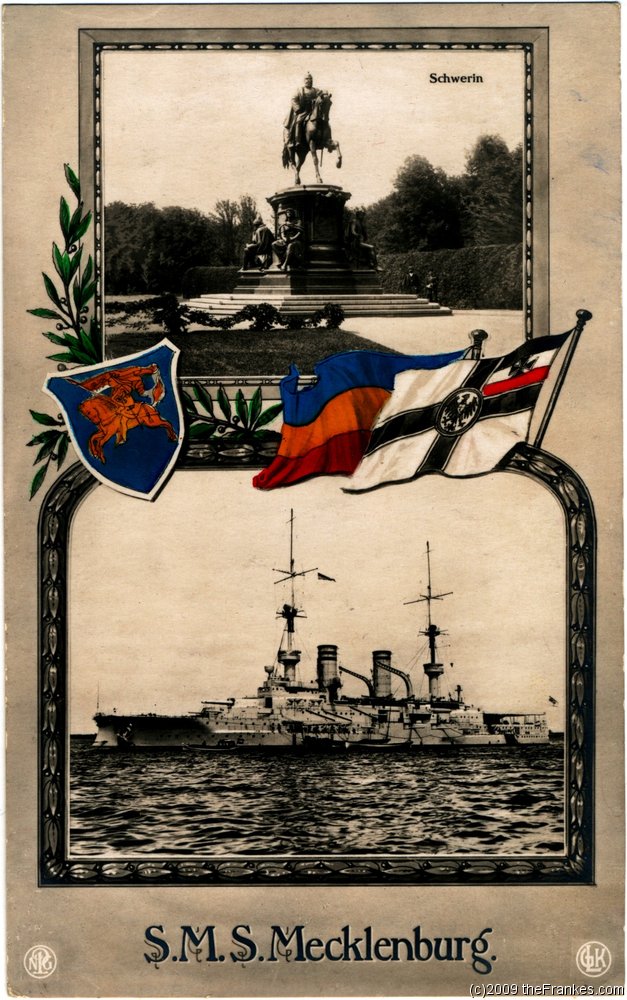
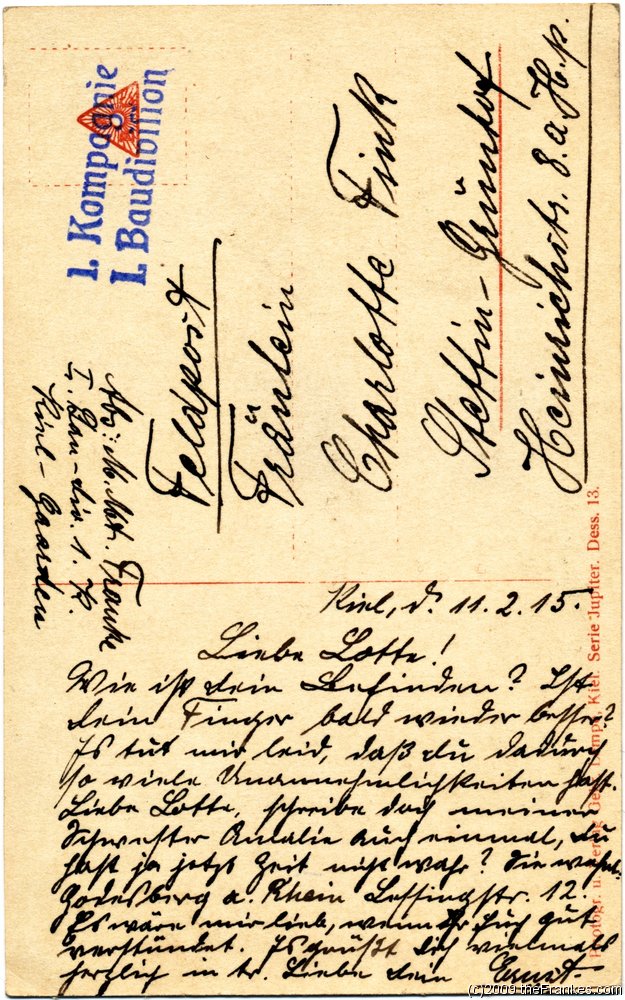
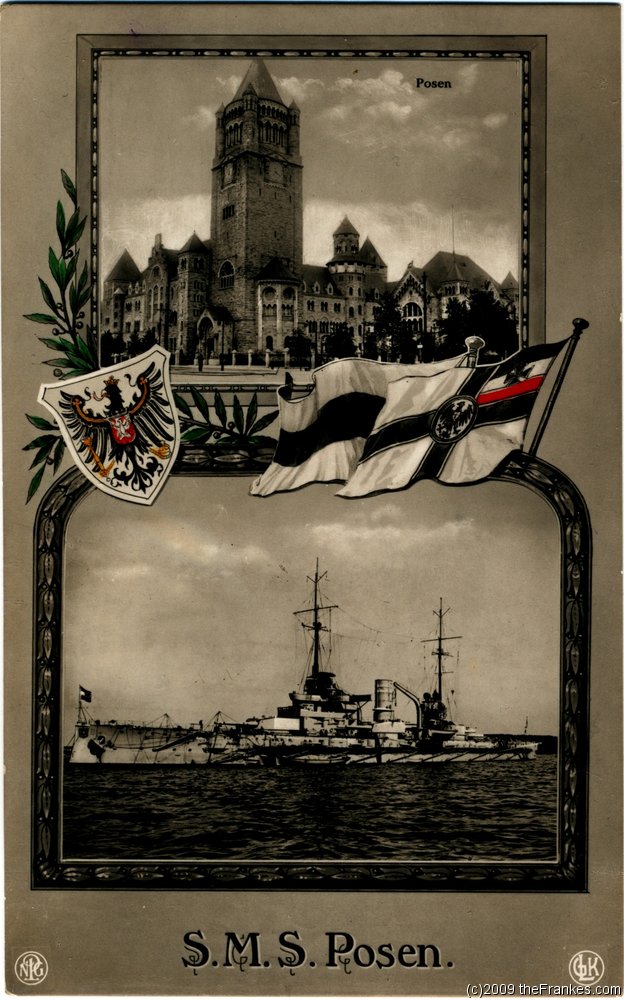
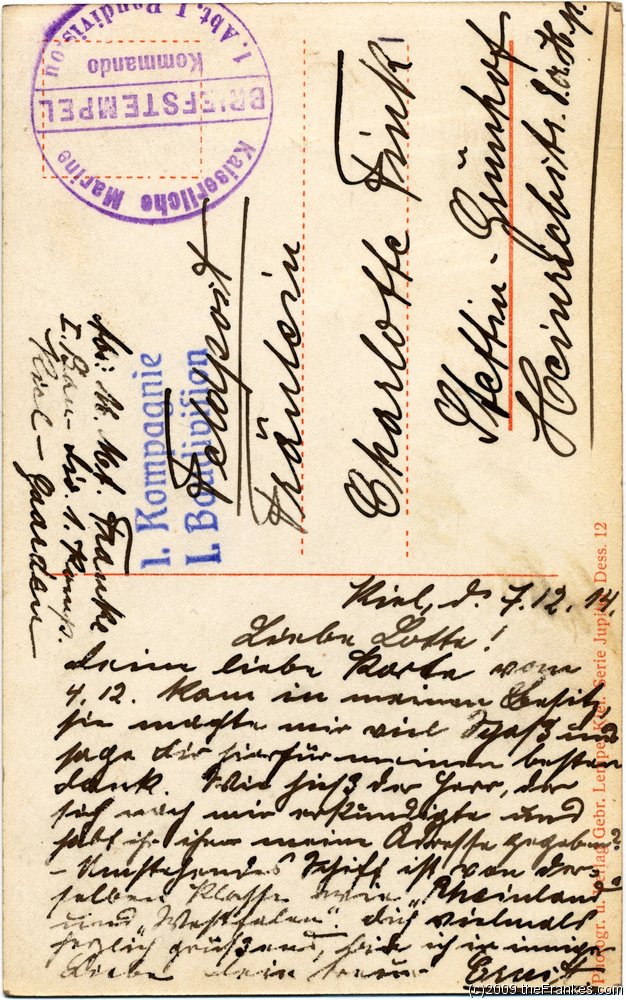
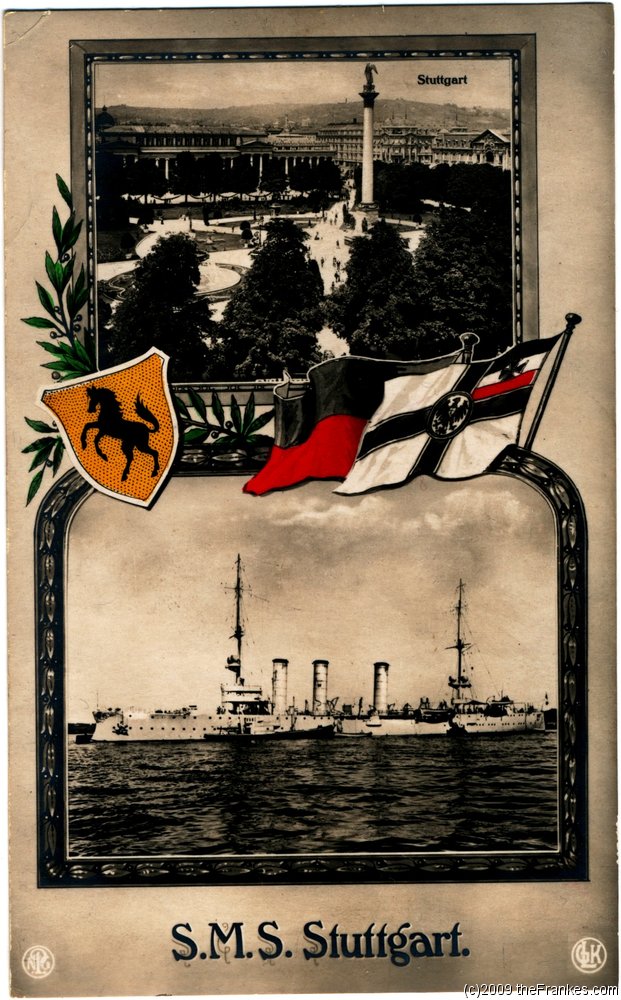
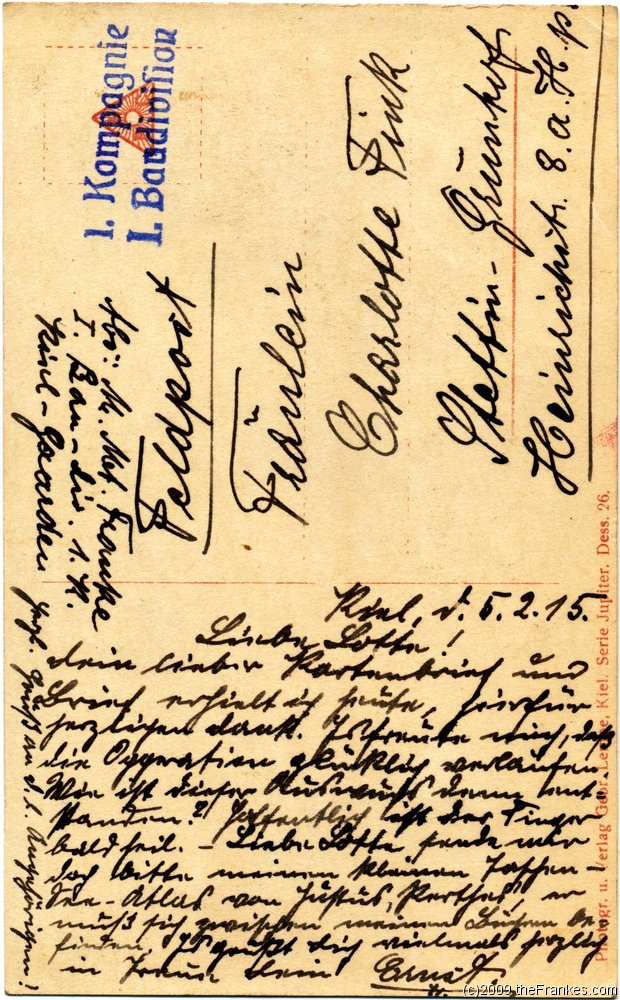
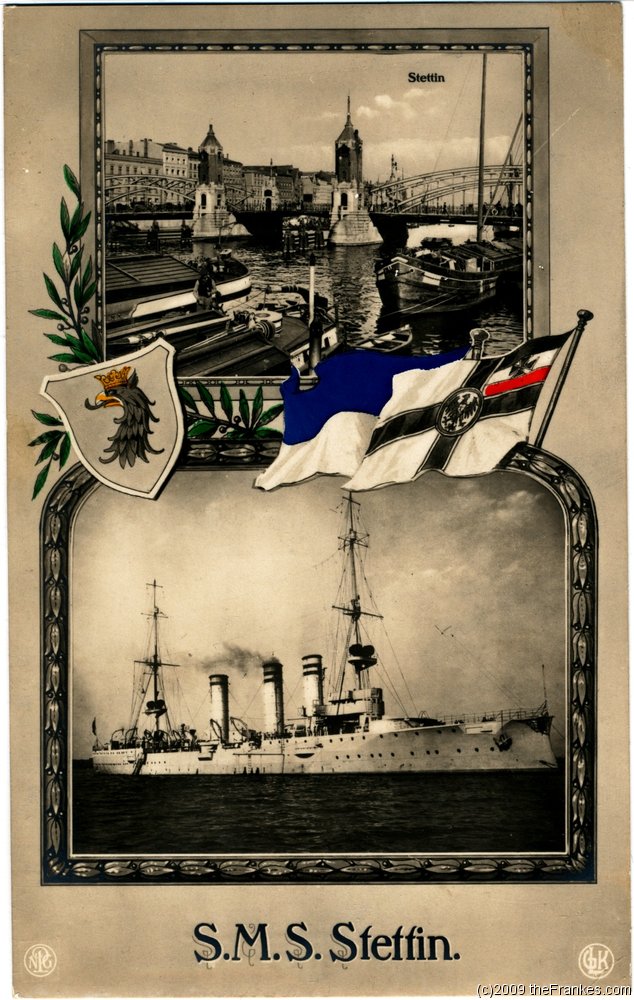
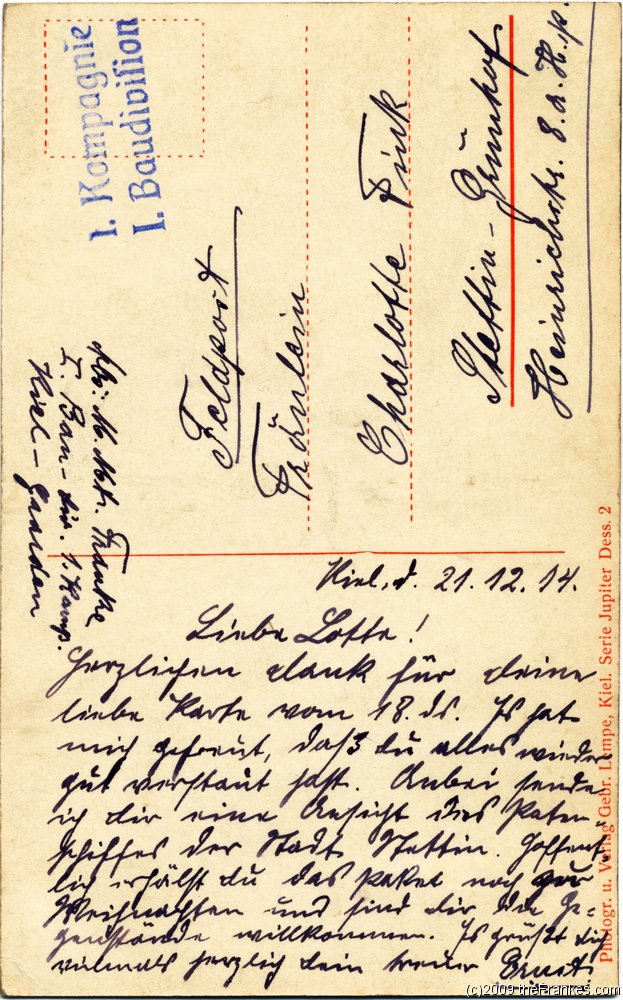
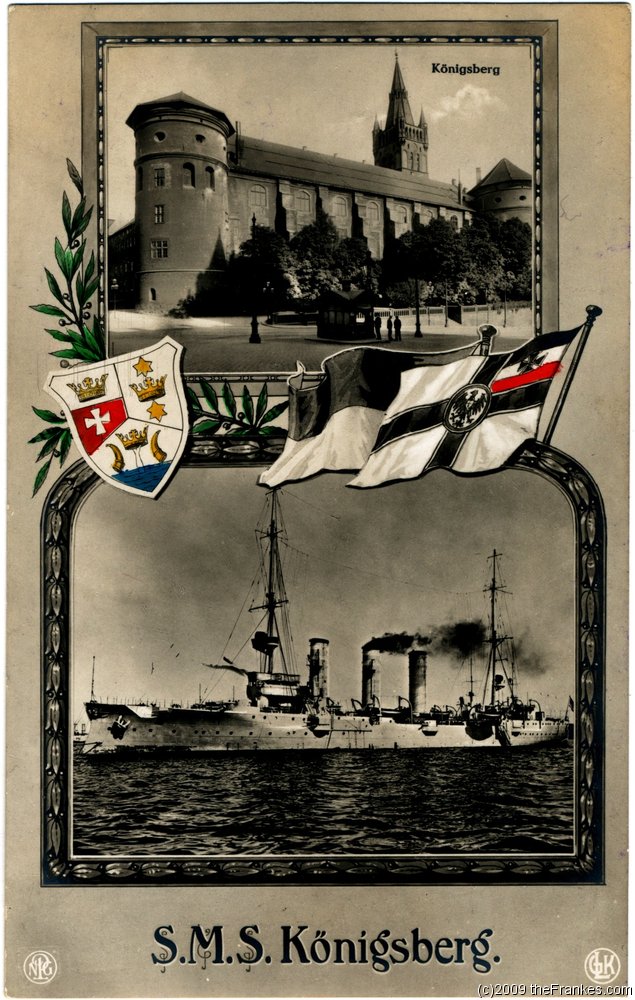
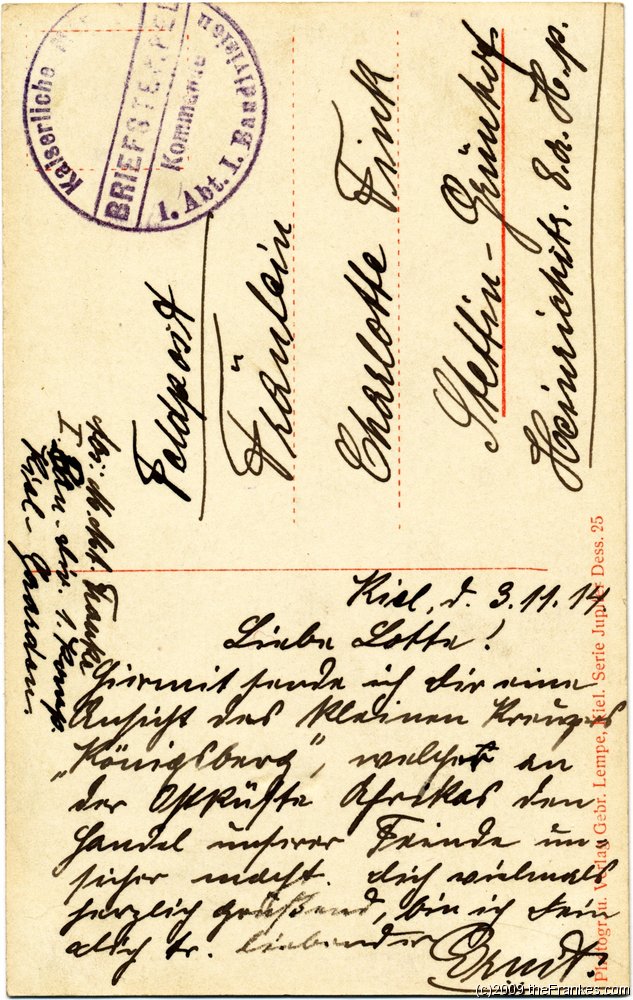
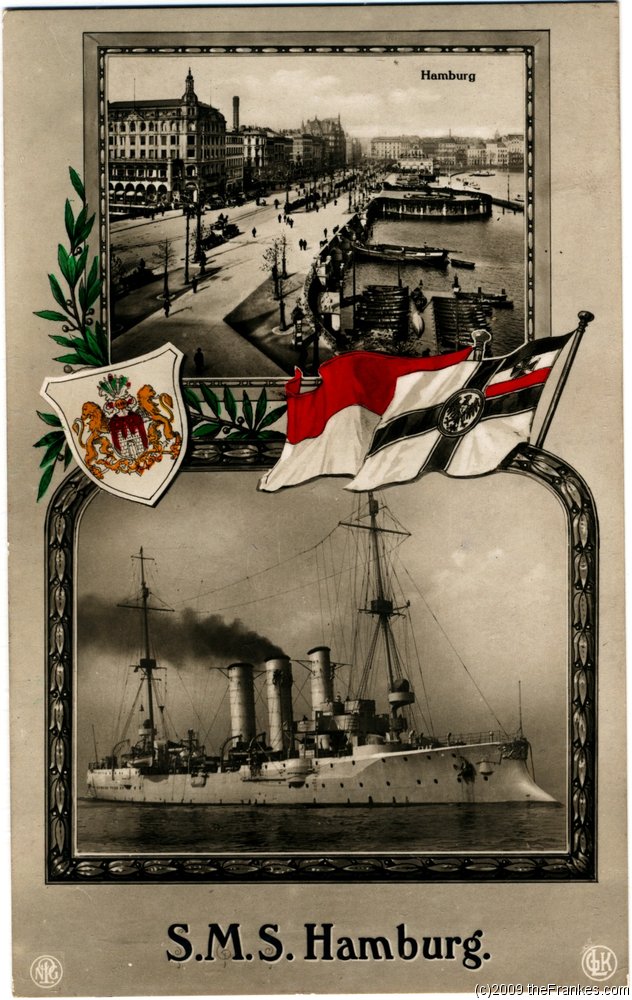
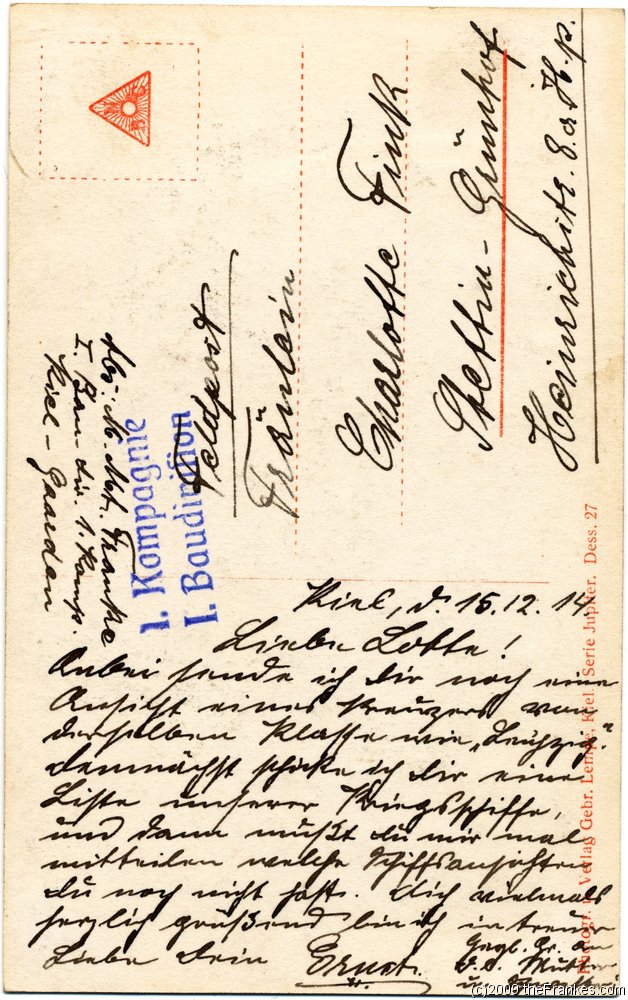
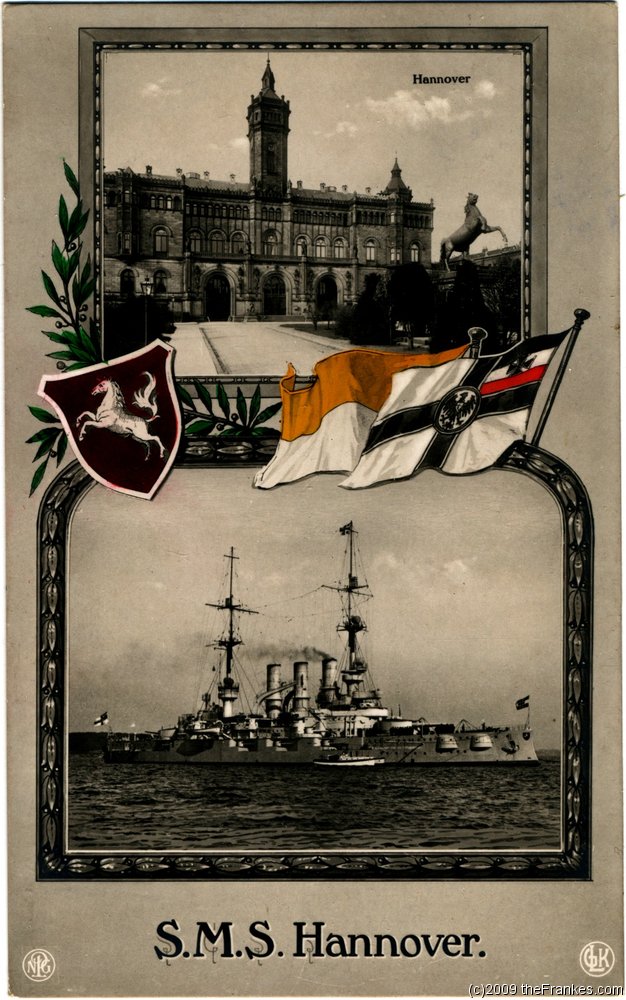
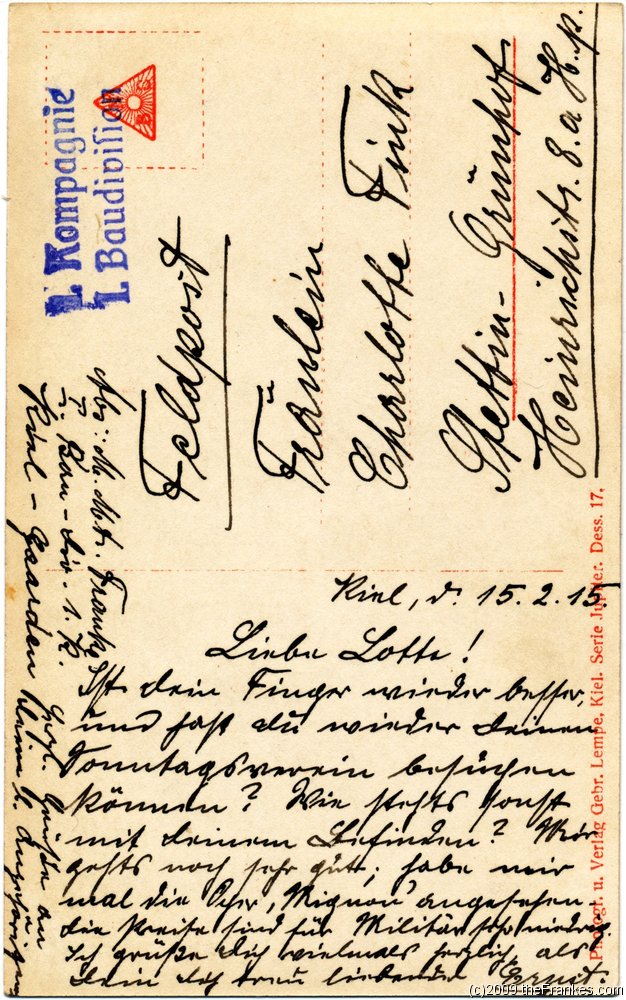

SET 25
1. Liebe Lotte! d. Kiel, 14.12.14
Anbei eine Ansicht unseres ersten Dreadnoughts (Fürchtenichts translation of Dreadnought into German), welcher zu meiner Zeit in Dienst kam und alles in Erstaunen setzte. Dich vielmals herzlich grüßend bin ich in treuer Liebe Dein Ernst
Dear Lotte! Kiel, 14.12.14
Enclosed is a view of our first Dreadnought, she was commissioned durind my time in service and everybody was very surprised. With many affectionate greetings I am your truthful Ernst.
2. Liebe Lotte! Kiel, d. 11.2.15
Wie ist Dein Befinden? Ist Dein Finger bald wieder besser? Es tut mir leid, dass Du dadurch so viele Unannehmlichkeiten hast. Liebe Lotte, schreibe doch meiner Schwester Amalie auch einmal, Du hast ja jetzt Zeit, nicht wahr? Sie wohnt Godesberg a(m) Rhein, Lessingstr. 12 . Es wäre mir lieb, wenn ihr Euch gut verstündet. Es grüßt Dich vielmals herzlich in treuer Liebe Dein Ernst
Dear Lotte! Kiel, 11.02.15
How are you? Will your finger be better soon? I am sorry that there are so many inconveniences for you. Dear Lotte, would you please write to my sister Amalie, you now have the time, don’t you? She lives at Godesberg at the Rhine, Lessingstreet 12. I would feel better if you two got along well. Many affectionate greetings with love from your truthful Ernst.
3. Liebe Lotte! Kiel, d. 7.12.14
Deine liebe Karte vom 4.12. kam in meinen Besitz, sie machte mir viel Spaß und sage Dir hierfür meinen besten Dank. Wie hieß der Herr der sich nach mir erkundigte und habt ihr ihm meine Adresse gegeben? Umstehendes Schiff ist von derselben Klasse wie „Rheinland“ und „Westfalen“. Dich vielmals herzlich grüßend bin ich in inniger Liebe Dein treuer Ernst
Dear Lotte! Kiel, 07.12.14
Your dear card dating 04.12. came into my possession, I want to thank you very much. What was the name of the man who asked for me and did you hand him my address? The ship on the picture is of the same class as “Rheinland” and “Westfalen”. Many affectionate greetings, I am in true love your truthful Ernst.
4. Liebe Lotte! Kiel, d. 5.12.15
Dein lieber Kartenbrief und Brief erhielt ich heute (bad grammar! Should be: Deinen lieben….), hierfür herzlichen Dank. Es freute mich, dass die Opperation (wrong spelling, should be: Operation) glücklich verlaufen ist. Wie ist dieser Auswuchs denn entstanden? Hoffentlich ist der Finger bald heil. – Liebe Lotte, sende mir doch bitte meinen kleinen Taschen-See-Atlas von Justus Perthes, er muß sich zwischen meinen Sachen befinden. Es grüßt Dich vielmals herzlich ich in Treue Dein Ernst
Dear Lotte! Kiel, 05.12.15
I received your dear card-letter today, many thanks. I am happy that the surgery went well. How come that the abscess on the finger started growing? Hopefully the finger will be healed soon. – Dear Lotte, would you please send my little pocket atlas of the seas by Justus Perthes, it must be among my things. Many affectionate greetings from your truthful Ernst.
5. Liebe Lotte! Kiel, d. 21.12.14
Herzlichen Dank für Deine liebe Karte vom 18. d. M(onats), Es hat mich gefreut, dass Du alles wieder gut verstaut hast. Anbei sende ich Dir eine Ansicht des Patenschiffes des Stadt Stettin. Hoffentlich erhälst Du das Paket noch zu Weihnachten und sind dir die Gegenstände willkommen. Es grüßt Dich vielmals herzlich Dein treuer Ernst
Dear Lotte! Kiel, 21.12.14
Many thanks for your dear card dating from the 18th. I am glad that you were able to pack everything away. Enclosed is a view of the partner-ship of the city of Stettin. Hopefully you will get the package in time for Christmas and the things are of use. Many affectionate greetings from your truthful Ernst.
6. Liebe Lotte! Kiel, d. 3.11.14
Hiermit sende ich Dir eine Ansicht des kleinen Kreuzers „Königsberg“, welcher an der Ostküste Afrikas den Handel unserer Feinde unsicher macht. Dich vielmals herzlich grüßend bin ich Dein Dich treu liebender Ernst
Dear Lotte! Kiel, 03.11.14
Enclosed is a view of light cruiser “Königsberg”, she is endangering the trade of our enemies off the east coast of Africa. Many affectionate greetings from your truthful Ernst.
7. Liebe Lotte! Kiel, d. 15.12.14
Anbei sende ich Dir noch eine Ansicht eines Kreuzers von derselben Klasse wie „Leipzig“. Demnächst schicke ich Dir eine Liste unserer Kriegsschiffe, und dann musst Du mir mal mitteilen, welche Schiffsansichten Du noch nicht hast. Dich vielmals herzlich grüßend bin ich in treuer Liebe Dein Ernst. Herzl(iche) Gr(üße) an D(eine) l(iebe) Mutter u(nd) Schwester
Dear Lotte! Kiel, 15.12.14
Enclosed is a view of a cruiser, she is of the same class as “Leipzig”. Soon I’ll send you a list of all our warships, all you have to then is to tell me which views you not yet have. Many affectionate greetings from your truthful Ernst. Many heartily greetings to your dear relatives. Many affectionate greetings from your truthful Ernst. Many heartily greetings to your dear mother and sister.
8. Liebe Lotte! Kiel, d. 15.2.15
Ist Dein Finger wieder besser und hast Du wieder Deinen Sonntagsverein besuchen können? Wie stehts sonst mit Deinem Befinden? Mir geht’s noch sehr gut; habe mir mal die Oper „Mignon“ angesehen, die Preise sind für Militär sehr niedrig. Ich grüße Dich vielmals herzlich als Dein Dich treu liebender Ernst. Herzl(iche) Grüße an Deine l(ieben) Angehörigen
Dear Lotte! Kiel, 15.02.15
Is your finger better already and will you be able to visit Sunday’s club? How are you? I am still fine, went to see the opera “Mignon”, fees for the military are very low. Many affectionate greetings from your truthful Ernst. Many heartily greetings to your dear relatives.
From Urs:
SET 25
# 1.
The “Dreadnought” was a British battleship, commissioned December, 2, 1906. It`s construction as a “all-big-gun-battleship” was part on the “revolutionary” reforms introduced into the Royal Navy by its charismatic First Sea Lord, Admiral Fisher (whose life story is too extensive to be covered in this text). The “Dreadnought” was meant to be superior to all existing battleships by firepower (10 heavy guns instead of the normal 4) and speed (21 knots instead of the normal 18, due to propulsion by steam turbines). “Dreadnoughts” became the term for the battleship-classes of all nations which duplicated or followed the British design, the term “Pre-Dreadnoughts” being used for the older ships (with 4 heavy guns). The German Navy was so far behind in its construction program that its last pre-dreadnought-type ship, the “Schleswig-Holstein” (the very ship that “started” the Second World War) was launched (!) 5 days after the “Dreadnoughts`s” commissioning. The first “Dreadnought”-ship in the German Navy was the “Nassau”, commissioned in October, 1909, with sister-ships “Posen”, “Rheinland” and “Westfalen”. The construction of the “Dreadnought” started a new “naval arms race” in battleships. (For more information of this extensive topic, have a look at literature and internet).
# 3.
See comment to #1
#5.
“Stettin” was a ship of the “Nürnberg”-class
#6. 03.11.14
Since the beginning of the war ”Königsberg” had operated at the East coast of Africa continuously beset by engine troubles and lack of coal, but had managed to sink one allied merchant ship and, on September 20, the British light cruiser “Pegasus” in a surprise attack off Zanzibar. After that, the ship had sought refuge in the delta of the Rufiji river where it remained due to engine problems. In October, the British discovered the “Königsberg`s” lair by chance and started what might be called a naval siege which extended to more than six months. At the day Ernst wrote his card, November 3, 1914, the “Königsberg” was already trapped in the shallow waters of the Rufiji far from the sea and unable to “endangering the trade of our enemies” any more. In July 1915, after several small actions ashore, British forces eventually had approached the “Königsberg`s” anchorage so far that two monitors which had been brought from Britain just for this purpose were able to open fire. Heavily damaged, “Königsberg” was scuttled by its own crew on July 11, 1915. Their fighting days were not over, however, as the sailors with several dismounted guns joined the German colonial forces in East Africa who were, under the command of General Paul von Lettow-Vorbeck, able to keep fighting until the end of the war, surrendering only after the news of the ceasefire in Europe had reached East Africa on November 25, 1918.
These are really lovely old pictures and deserve to be given a new ‘lease on life’by getting them out there to be seen by as many people as possibe. I certainly will try my best to achieve this end through my own nautical site on flickr.
This site is excellent and the sharing of pictures in the public domain is commendable, I am very pleased that I came upon this site.